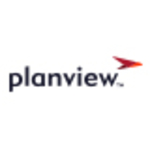What is our primary use case?
The use cases are mainly around project delivery and managing the whole project control and governance at a project and program level. We are using it for investment management or the whole demand management pipeline prioritization. We also use it for:
- Resource management and capacity and utilization
- Value and benefits management to assess business cases or initiatives
- Reporting management
So, we use it across the whole life cycle.
How has it helped my organization?
PPM provides a single place where our teams can track and measure progress toward their goals. This consolidated view is important for our organization because we are able to see what's coming through the pipeline, what's in-flight, and what's our current resource capacity, as well as the financial burn rate. When it is all in one place, we are able to slice and dice information and look at it in different ways. That helps in the real insight into what's happening. It also helps in shaping our decisions to make sure we achieve the goals and outcomes of the organization.
When you start doing things in a structured way, you get consistent reporting. With that consistent reporting, you get things that are not working properly in a much more time-efficient way, which helps in decision-making to pick up things that are not working as per expectations. Whether it is a project, whether it is a risk, whether it is an issue, or whether it is a financial burn rate, it is all about getting the right visibility at the right time, which helps in the right decision-making to avoid any pitfalls.
PPM’s portfolio management dashboard provides the flexibility to have a list view or even a financial view. It has standard views, and on top of that, we have configured other views based on our needs. The standard views are good to start with, but when we have more information, we want to look at the information in different ways. We can configure dashboards and views, which is a plus point. We're not restricted to just what comes out of the box.
It comes with a Kanban view, which you can configure. It also provides the flexibility to create a backlog by having stage gates. So, we can do backlog management, and we can configure Kanban boards. The good thing about it is that we are able to capture that information. Once we're able to capture that information in a simpler way, then we can report it. What we have seen in some of the tools is that capturing information is not that easy, or they do it a standard way, and that's it. You don't have the flexibility to change them in a certain way or in the way the organization works. PPM allows you to adapt to best practices. Every organization is unique. If that flexibility is there, then you can have best practices along with some of the good things that the organization does. That's where the flexibility of PPM is very good.
Every organization, small and large, uses the whole portfolio structure for the hierarchy or the whole organization model. With the flexibility of having portfolios and sub-portfolios, you're able to model a hierarchy. Once you do that, the roll-up can happen from the bottom, and you can also have a top-down effect. This flexibility is good to come up with a portfolio hierarchy. This capability is good in PPM.
It has been helpful for resource consolidation. It does give us a picture of resource capacity and utilization. It has been absolutely helpful in managing our resources.
It has helped accelerate our organization’s delivery.
What is most valuable?
Generally, we use all the modules and all features. So, every module has its own merit. Overall, they have a very strong workflow management capability. That's a very strong feature because then you can model any process easily. Whether it is a demand management process, a pipeline management process, or your project delivery methodology, it is much easier because of their workflow management capability.
What needs improvement?
They can make its UI better. Currently, the UI is a bit clunky.
The portfolio management dashboard is good, but more work needs to be done in that space. You can capture the goals and objectives, and you can also have KPIs. How they're all linked and how they all roll up is something they need to look into. They can make some enhancements to the product to close that loop.
They have made a good start when it comes to the built-in capabilities to support Lean Portfolio Management and be aligned to Scaled Agile Framework (SAFe) initiatives, but there are still gaps, which they are probably going to cover in future releases.
For how long have I used the solution?
I have been using this solution for almost 14 years.
How are customer service and support?
I would rate their customer support an eight out of ten.
How would you rate customer service and support?
Which solution did I use previously and why did I switch?
I've used other solutions. We used CA Clarity in the past. It was a good product, but with the Broadcom acquisition, the overall focus on CA Clarity has gone down. So, overall, you don't see a lot of traction in the way the product is being developed. Hence, we made a switch.
How was the initial setup?
It is software as a service. In terms of maintenance, it is all managed by the Micro Focus team. From time to time, we do enhancements, but that's something that we do ourselves.
Which other solutions did I evaluate?
We did scan the market. We evaluated Planisware. There were products like Planview or Clarizen. There were pretty good products from the top tier that we looked into.
Product-wise, Planview was very good. Even Planisware was very good. Planview was a bit better than Micro Focus, but one of the key things was the capability to deliver and come up with innovative solutions. That's where the flexibility of Micro Focus is quite good.
What other advice do I have?
I would advise looking at your internal processes. The maturity of your processes and the behavioral or cultural aspect are important. If those two aspects are not looked into, then even if you get the best tool, it won't give you the outcome you want. So, before you get into the tool, make sure you have a bit of maturity in your processes. You can mature it further, but you must have some level of maturity. Also, make sure that the organization is ready. If the organization is not ready and the leadership is not aligned, there will be a lot of roadblocks.
You need to have a strategic plan and link your strategic pillars, alignment goals, and business objectives. PPM enables the organization to translate strategic plans into actionable investment strategies, but it also depends on how you configure the tool. Once you have the right flow right from your strategic plan to your pillars and initiatives, that information can be reported to various stakeholders. So, it is important to have a dynamic flow.
It is important that the portfolio hierarchy is well-defined. If you don't do that well, then the information doesn't flow from the bottom. Whether it is epics or agile, or your projects or initiatives, it is important to get the hierarchy right. Once you have the hierarchy right and you also are very clear about what's in your agile tool, what's in your PPM tool, and how the information flows, it definitely gives you the outcome that you need. So, a bulk of the work initially goes into setting up the right hierarchy. If you don't get that right and your information flow is broken, that definitely causes problems. It took us one or two iterations to do that, but we got there.
For integrating your agile tools and synchronizing the execution layer back into PPM, they have a base connector. The good thing is that they have provided an SDK. So, we can enhance the connector by doing some coding. That's a good thing, but the agile life cycle is something that we are learning as we go. The challenge is not about the tools. The challenge is more about the behavior in the organization because every team does it in a different way. Standardizing a way so that everyone does it in one way and having some taxonomy in the agile tool and integrating that with PPM is a challenge. It is more on the people and behaviors side, not specifically the tool side.
Overall, I would rate it a seven out of ten.
Which deployment model are you using for this solution?
Public Cloud
If public cloud, private cloud, or hybrid cloud, which cloud provider do you use?
Amazon Web Services (AWS)
Disclosure: My company has a business relationship with this vendor other than being a customer: Partner









